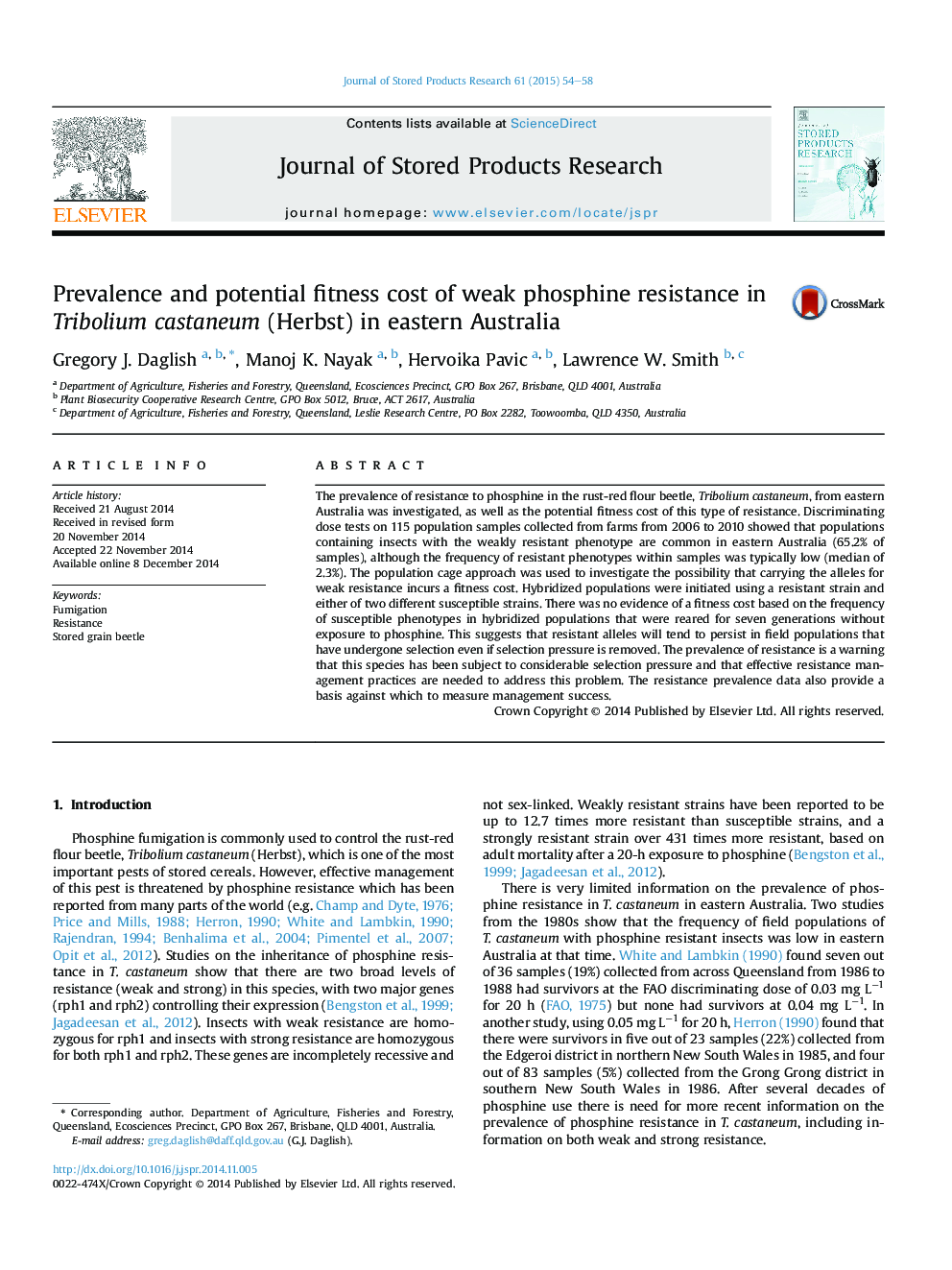| Article ID | Journal | Published Year | Pages | File Type |
|---|---|---|---|---|
| 4516999 | Journal of Stored Products Research | 2015 | 5 Pages |
•We investigated weak phosphine resistance in Tribolium castaneum adults.•Weak resistance was common in population samples from eastern Australia.•The frequency of resistant individuals in field samples tended to be low.•There was no evidence of a fitness cost in the absence of phosphine selection.
The prevalence of resistance to phosphine in the rust-red flour beetle, Tribolium castaneum, from eastern Australia was investigated, as well as the potential fitness cost of this type of resistance. Discriminating dose tests on 115 population samples collected from farms from 2006 to 2010 showed that populations containing insects with the weakly resistant phenotype are common in eastern Australia (65.2% of samples), although the frequency of resistant phenotypes within samples was typically low (median of 2.3%). The population cage approach was used to investigate the possibility that carrying the alleles for weak resistance incurs a fitness cost. Hybridized populations were initiated using a resistant strain and either of two different susceptible strains. There was no evidence of a fitness cost based on the frequency of susceptible phenotypes in hybridized populations that were reared for seven generations without exposure to phosphine. This suggests that resistant alleles will tend to persist in field populations that have undergone selection even if selection pressure is removed. The prevalence of resistance is a warning that this species has been subject to considerable selection pressure and that effective resistance management practices are needed to address this problem. The resistance prevalence data also provide a basis against which to measure management success.
